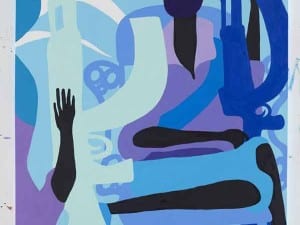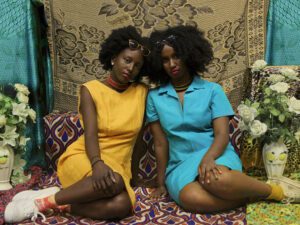In 2007, for the first time ever in its 24 year history, the Turner Prize was presented outside London. The world’s most prestigious art prize was instead awarded in Liverpool, as a curtain raiser to the city’s status of European Capital of Culture 2008. However, that was not the only reason for the decision to move the prize, as Christoph Grunenberg, director of TATE Liverpool pointed out. “It’s not happening in a vacuum, it’s building on a long tradition of very strong visual arts scene in the city as well as almost 20 years of TATE Liverpool and a long history of engagement with contemporary art.”
With regards to the shortlist for the prize, Grunenberg is keen to highlight, “It’s London artists, as well as artists from outside London, but it’s also all artists who all have some kind of relationship with Liverpool. Some of them have had quite an intense relationship with the city and with TATE Liverpool.” Of course each artist’s relationship with Liverpool had no bearing on the decision-making process, but one thing that the list does seem to reflect is the mood of the country at the moment. Grunenberg is quick to counter any hint of a conscious decision on the part of the judging panel, of which he is chair, to select a politicised group. He does however acknowledge, “it is a political list… it will make an interesting exhibition, those artists are all in some way or another concerned with a political situation, with the history of this country or their own personal history, so I think there is a connecting strand, which brings all their work together.”
This year’s shortlist includes Zarina Bhimji for her solo exhibitions at Haunch of Venison, London and Zurich, with work engaging with universal human emotions such as grief, pleasure, love and betrayal using non-narrative photography and film-making; Nathan Coley for his solo exhibition at Mount Stuart, Isle of Bute, the public installation Camouflage Church, Santiago de Compostela, Spain and his contribution to the group exhibition Breaking Step — Displacement, Compassion and Humour in Recent British Art at the Museum of Contemporary Art, Belgrade, Serbia. Through a variety of media, Coley’s work manifests the belief systems embedded in society and its architectures; Mike Nelson for his solo exhibitions AMNESIAC SHRINE or Double coop displacement, Matt’s Gallery, London and Mirror Infill (2006), Frieze Projects, Frieze Art Fair, London in which his immersive installations transport the viewer to imaginary, yet plausible worlds; and Mark Wallingerfor his solo exhibition State Britain at TATE Britain. Wallinger’s powerful installation demonstrates art’s unique ability to engage with contemporary political issues.
The Turner Prize has been in danger of becoming purely synonymous with controversy in past years. Yet Grunenberg argues that that controversy forms part of the role of the prize, which is to widen the debate surrounding contemporary art. “One of the great things the Turner Prize has achieved is to bring contemporary British art to the forefront of people’s minds, it has broadened awareness. It has also grown up with incredible international success of British artists, not just the YBA, but already in the previous generation in the 1980s, and I think that’s a real acknowledgement of the excellence and the quality and the broad range of practice that exists now in Great Britain, which is now an international community of artists.” Gruenberg believes that the Turner Prize is also vital for opening up contemporary art to a whole new range of audiences and to try to engage people on all different levels.
Grunenberg does concede, however, that often engaging audiences with contemporary art isn’t as straightforward as it sounds. “It actually needs courage to go beyond your comfortable preconceptions, and actually do some work. There’s still the understanding that somehow it’s really about ‘what does this artwork tell me?’ rather than ‘what can I make out of it, and how can I understand it?’ It’s sort of a notion of light entertainment in a way, it has to be served on a platter, instantly consumable, which of course a lot of contemporary art isn’t.”
It isn’t just the public that occasionally struggle to comprehend contemporary art, as Grunenberg points out. “Sometimes one does feel exasperated by the questions one is asked, that includes all kind of media:both tabloid and quality outlets, as well as radio and television. I do hope there will come a point where it is not necessary anymore to defend contemporary art — especially if it has a conceptual nature — or the whole question of craft, of talent, and production. I do hope there will be, over the next year, a more open attitude to what are now very common practices.”
One thing that is always true of contemporary art is that it has to be seen firsthand, experienced up close and personal, to even begin to make any kind of impact. Audiences could judge for themselves by visiting TATE Liverpool and viewing The Turner Prize exhibition between 19 October and 13 January 2008. www.tate.org.uk.
Rachel Hazelwood





